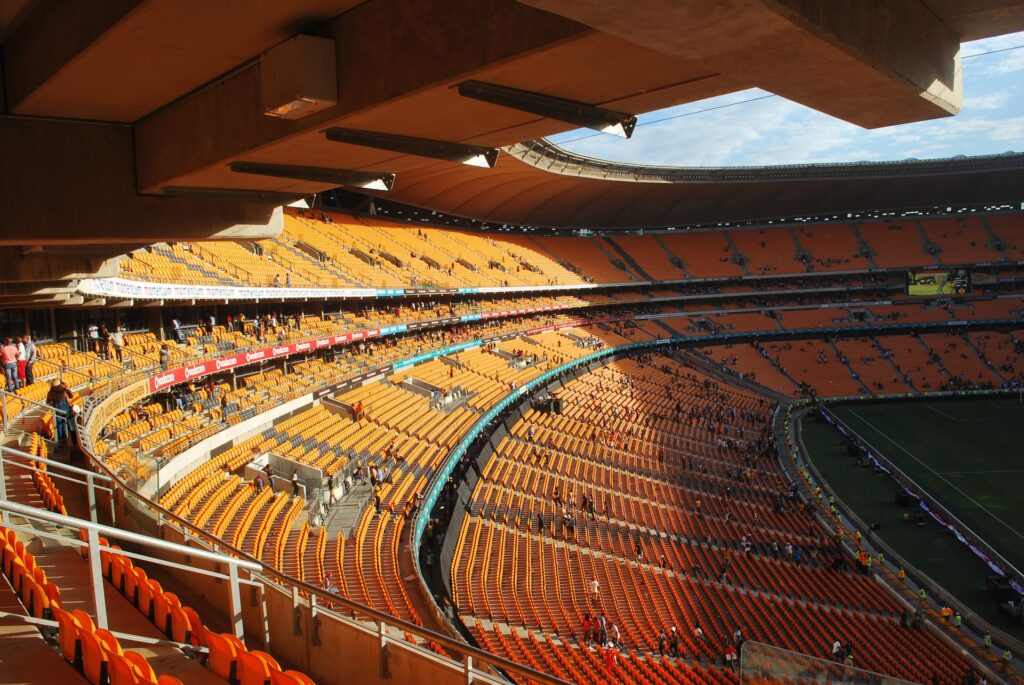Football is the most popular sport in the world; of that there can be little argument. From grass roots games to matches in the elite professional divisions, every weekend scores of people throughout the world watch their beloved sport in a live environment. Of course the quality of the football on offer varies drastically depending on the level at which it is being played, but the passion for the sport can be seen throughout.
Another major difference between the different levels of football can be seen in the venues in which games are played. For many smaller, local outfits, spectators will simply stand pitch side, with no seating available to sit on whilst watching their team play. However, in the professional leagues, you will see some of the biggest and most iconic arenas in world sport, capable of holding tens of thousands of fans at any one time.
But which are the biggest football stadiums in the whole world? Do any of the English Premier League grounds make the list? You may assume so, seeing as it’s globally the most popular professional football league. But you would be wrong if you made this assumption.
Read on to discover which football stadiums are the five biggest in the world, in terms of spectator capacity.
Rose Bowl – Capacity: 92,542
The Rose Bowl is located in Pasadena, California, United States and is perhaps best known for hosting the annual Rose Bowl Game, which is an American football event. It is regularly used for college football matches and has played host to five Super Bowl games, which is the second most of any stadium in the United States.
However, it is also known for staging top football (soccer) matches and has seen not one but two World Cup finals. The Rose Bowl hosted the 1994 FIFA World Cup Final and 1999 FIFA Women’s World Cup Final. It currently has a capacity of 92,542.
FNB Stadium – Capacity: 94,736

Moving from the United States to South Africa and that is where you will find the FNB Stadium. Located in Nasrec, which is a suburb of Johannesburg, the stadium is the home of South African football club Kaizer Chiefs. The FNB Stadium has a capacity of 94,736 and is perhaps more commonly known as Soccer City.
During the 2010 FIFA World Cup, fans could hear the vuvuzela at the FNB Stadium, which hosted 8 matches including the final between the Netherlands and Spain. It was also the scene of the final public appearance of Nelson Mandela.
Camp Nou – Capacity: 99,354
Is there a more iconic football stadium in Europe than the Camp Nou? The home of Barcelona, the Camp Nou has an official capacity of 99,354, with the record attendance currently sitting at 98,812. This was set for the Joan Gamper Trophy match between Barcelona and Arsenal in 2019.
In addition to being the home of Barcelona the Camp Nou has hosted several big games including the European Cup Winners’ Cup final and the opening match of the 1982 FIFA World Cup. Renovation of the stadium will begin in the summer of 2020 which could bring the capacity up to 105,000.
Melbourne Cricket Ground – Capacity: 100,024
Melbourne Cricket Ground, also known as simply ‘The MCG’ is the largest stadium in the Southern Hemisphere and located in Melbourne, Australia. It first opened to the public in 1853 and has since played host the Olympic Games, Commonwealth Games and the Cricket World Cup. Melbourne Cricket Ground is also used for football matches including Australia FIFA World Cup qualifying games.
In 2015, a match between Real Madrid and Manchester City in the International Champions Cup drew a crowd of over 99,000 people.
Rungrado 1st of May Stadium – Capacity: 114,000
This is without doubt the most difficult stadium to visit for football fans from around the world. The Rungrado 1st of May Stadium is in Pyongyang, North Korea and it opened on the 1st May 1989, hence the name. With a capacity of approximately 114,000, it is the largest stadium in the world and is mainly used for football matches in addition to athletics events.
Having been renovated in 2015, the Rungrado 1st of May Stadium reopened and the North Korean men’s and women’s football team have played FIFA World Cup qualifiers at this venue.





[…] post The 5 Biggest Football Stadiums in the Whole World appeared first on […]